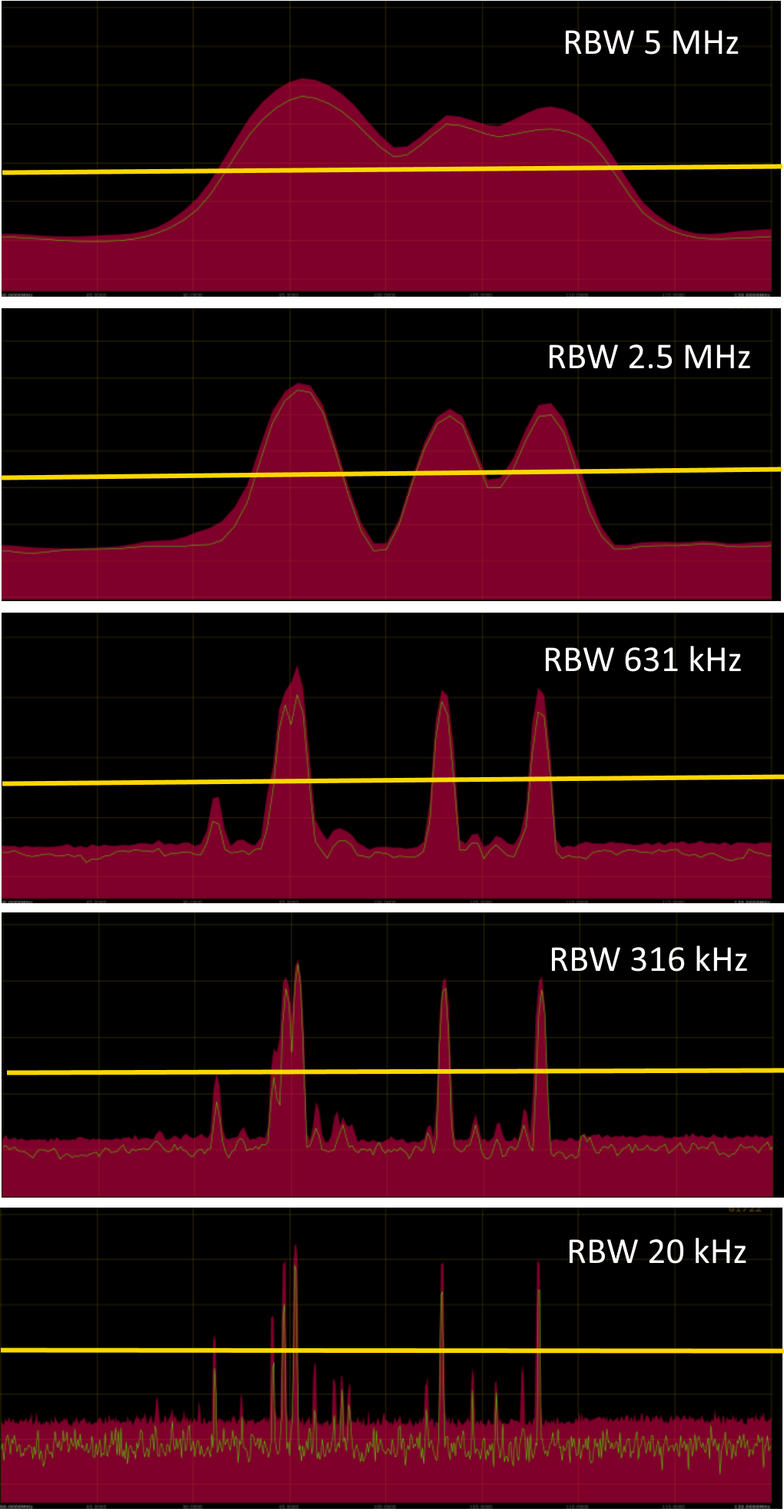Resolution Bandwidth
And Why It Is Important In Intermodulation Analysis
Resolution bandwidth (RBW) is defined as the width of the bandpass filter that is swept across the frequency range when performing RF spectrum analysis. A more narrow RBW provides finer frequency resolution and the ability to differentiate signals that have frequencies that are close together. When a wider RBW is applied then signals tend to blend together, hiding available "white space" that exists between transmitters. When you import a spectrum trace for intermodulation analysis then the RBW of the scan is of critical importance because the less white space that is available then the smaller the size of the resultant frequency set. RBW is not a factor if you are not importing a spectrum trace and simply specifying Start and End frequencies.
So -- why not use the smallest possible RBW for all spectrum scans? The answer is: Sweep Time -- the smaller the RBW then the more data is acquired and the longer the refresh time between scans. The Sweep Time is proportional to the trace's span and inversely proportional to RBW squared:
Sweep Time = (k * Span) / RBW^2
As you can see, the Sweep Time or Refresh Rate decreases as you decrease the frequency span of your spectrum trace and increases (exponentially) as you decrease the RBW. So -- as in real life -- everything comes down to a trade-off. Finer resolution means longer Sweep Times. For purposes of intermodulation analysis and frequency coordination, the "rule of thumb" is an RBW that is at least 25 KHz (or more narrow).
In addition to differentiating signals and revealing available white space, RBW affects the noise floor -- typically, the more narrow the RBW then the lower the noise floor.
Kestrel TSCM has an excellent web page that explains the importance of RBW from a TSCM (Technical Surveillance Counter Measures) perspective -- here is the link: https://kestreltscm.com/resolution-bandwidth-rbw-80-120mhz. The same technical considerations apply to frequency coordination of wireless trnasmitters for a live event. In the case of TSCM the goal is to identify / detect rogue transmissions. In the case of frequency coordination the goal is to identify available white space that can be used for channel assignment and which is free of RF interference and intermodulation distortion. The images below (from the Kestrel TSCM web site) provide an excellent example that shows how white space becomes more available as the RBW is decreased. In these images the white space is the black area beneath the yellow threshold line. In the upper image where RBW is 5 MHz there appears to be very little white space available in the middle of the spectrum trace and, so, the generated IMD-free frequency set will have few available channels. However, when the RBW is decreased to 20 KHz (bottom image) then you can see there really is a lot of white space available to locate transmitters.

Referencies:
1. Resolution Bandwidth (RBW) | Kestrel TSCM
2. Selecting the Best Resolution Bandwidth (RBW) | Keysight Technologies
Created with the Personal Edition of HelpNDoc: Quickly and Easily Convert Your Word Document to an ePub or Kindle eBook